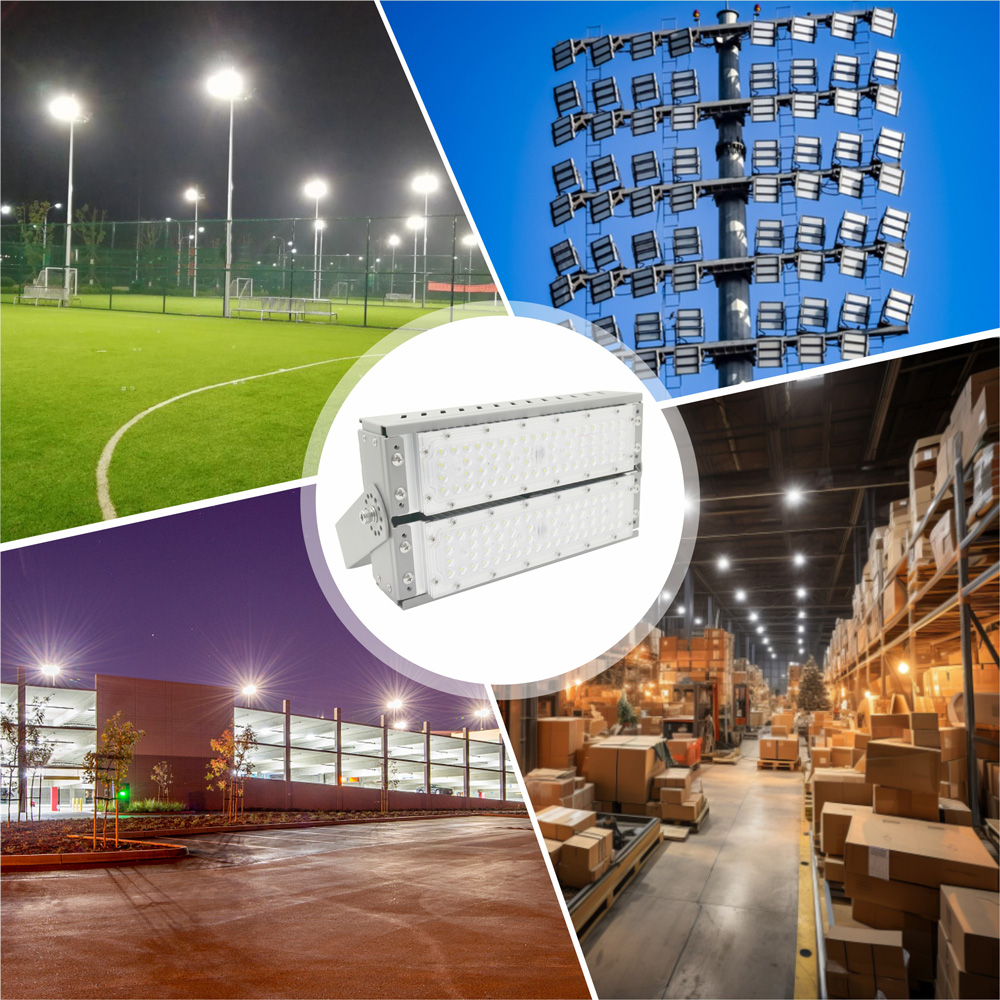Although both flood lights and streetlights are outdoor lighting equipment, they have some significant differences in design, purpose, installation method and application scenarios. The following are the main differences between the two:
1. Different uses
flood lights: Mainly used for lighting specific objects, such as billboards, building facades, landscape sculptures, etc., emphasizing the prominent illumination of specific targets to achieve the effect of emphasizing, beautifying or creating a special atmosphere.
Street lights: Installed on both sides of the road, providing road lighting for pedestrians and vehicles, ensuring traffic safety and pedestrian convenience, and having the nature of public services.
2. Different installation locations
flood lights: Can be installed on the top, wall, ground and other locations of the building, and can be flexibly installed according to the target to be illuminated. For example, flood lights are installed on the exterior walls of large shopping malls to illuminate the signs and architectural features of the shopping malls.
Street lights: Usually installed on lamp poles on both sides of the road, with certain standard requirements for height and spacing to ensure the uniformity and continuity of road lighting.
3. Different lighting characteristics
flood lights: With strong directionality, the beam angle can be adjusted, and can focus on illuminating specific areas to form a high-brightness lighting effect. The beam of a flood light can be narrow, medium or wide angle, and can be selected according to different illumination requirements.
Streetlights: Generally, diffuse lighting is used to illuminate a larger area. The lighting of streetlights is relatively uniform to meet the lighting needs of different locations on the road.
4. Different lamp structures
flood lights: Usually composed of a shell, a reflector, a light source, a lens, etc. The shell has good waterproof, dustproof and heat dissipation properties. The reflector and lens are used to control the angle and shape of the beam. The light source generally uses a high-intensity gas discharge lamp or LED lamp.
Streetlights: The structure is relatively simple, mainly composed of a lamp shell, a light source, electrical components and a lamp pole connection. The lamp shell of the street lamp needs to have good wind resistance, earthquake resistance and corrosion resistance, and the light source mostly uses high-efficiency and energy-saving LED lamps.
5. Different control methods
flood lights: Switching and dimming can be performed by manual adjustment, timer, photosensitive control or remote control. In some special occasions, such as stage performances, building night scene lighting, etc., flood lights can also be linked with the lighting control system to achieve switching of multiple lighting effects.
Street lights: Generally, they are controlled automatically, and they are automatically switched on and off according to the light intensity and time. Some smart street lights can also detect the flow of pedestrians and vehicles through sensors and automatically adjust the brightness to achieve energy saving.
The main differences between flood lights and street lights are their design purpose, beam angle, installation method, light source type and application scenario. flood lights are mainly used to focus on specific areas or objects, while street lights are used to provide uniform large-area lighting. When choosing the right lamp, you should decide based on the specific lighting needs and application scenarios. If you have more specific project requirements, it is recommended to consult a professional lighting designer or supplier for more detailed advice and solutions.







